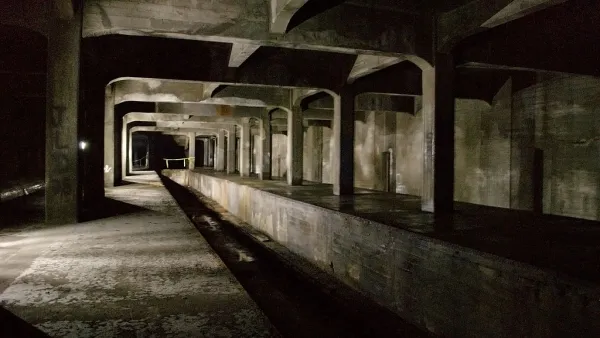The construction of Riyadh's Metro has ambitious goals to relieve gridlock and reduce obesity. Perhaps more importantly, it aims to grant women the freedom of mobility. “That's a lot to expect from a public transport system,” writes Susanne Koelbl.
The City of Riyadh, Saudi Arabia is implementing a strategic master plan to introduce an urgently needed subway system and undo its heavily congested, auto-centric built form. Currently under construction, the new Riyadh Metro will consist of “six metro lines -- both overground and underground – that fan out across the city like a spider's web, covering a total of 176 kilometers (109 miles).”
Walking appears to be non-existent for many Saudis, and the president of the Arriyadh Development Authority says that 50 years of urban planning failures is to blame. “The streets are empty and public squares are deserted. There are more six-lane highways than sidewalks,” says Ibrahim Sultan. “Saudis spend their entire lives moving between the air-conditioned interiors of their homes, their cars and the shopping mall.”
“That's why the new metro is designed not only to improve conditions in the inner city -- but to usher in social change,” reports Koelbl. “It could serve as a first step toward subtle progress in a country dominated by Wahhabism, an ultra-conservative branch of Sunni Islam, where women may not drive, seldom leave their homes alone and must always have full body cover and wear a veil when they do.”
In the new subway, women and children will be able to travel without escorts or controls, and will enter into separate compartments from men. “As anachronistic as that may seem, though, it marks progress nonetheless,” says Sultan.
FULL STORY: Mobility for Women: Riyadh Metro Promises Social Change

National Parks Layoffs Will Cause Communities to Lose Billions
Thousands of essential park workers were laid off this week, just before the busy spring break season.

Retro-silient?: America’s First “Eco-burb,” The Woodlands Turns 50
A master-planned community north of Houston offers lessons on green infrastructure and resilient design, but falls short of its founder’s lofty affordability and walkability goals.

Delivering for America Plan Will Downgrade Mail Service in at Least 49.5 Percent of Zip Codes
Republican and Democrat lawmakers criticize the plan for its disproportionate negative impact on rural communities.

Test News Post 1
This is a summary

Test News Headline 46
Test for the image on the front page.

Balancing Bombs and Butterflies: How the National Guard Protects a Rare Species
The National Guard at Fort Indiantown Gap uses GIS technology and land management strategies to balance military training with conservation efforts, ensuring the survival of the rare eastern regal fritillary butterfly.
Urban Design for Planners 1: Software Tools
This six-course series explores essential urban design concepts using open source software and equips planners with the tools they need to participate fully in the urban design process.
Planning for Universal Design
Learn the tools for implementing Universal Design in planning regulations.
EMC Planning Group, Inc.
Planetizen
Planetizen
Mpact (formerly Rail~Volution)
Great Falls Development Authority, Inc.
HUDs Office of Policy Development and Research
NYU Wagner Graduate School of Public Service





























